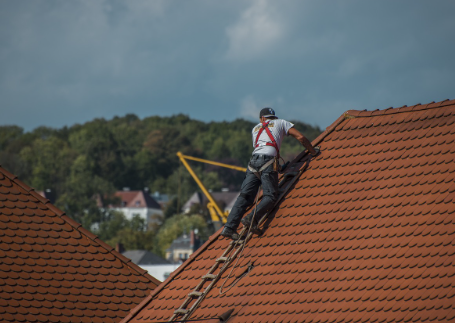
Re-Roofing: A Practical Guide for Homeowners
The process of re-roofing a home is not just about protecting against the vagaries of weather; it’s also a major investment that can enhance your property’s value and curb appeal. Whether you’re dealing with an aging roof or simply looking to upgrade to the latest in roofing technology, re-roofing is a project that requires careful consideration and planning. Here’s a step-by-step guide to help you through the re-roofing process.
Inspections and Assessments
Before you start your re-roofing project, you need to know the condition of your existing roof. It’s a good idea to have a professional inspection. An expert can look for issues such as leaks, water damage, and structural integrity. They can also help assess if your roof is at the end of its lifespan or if there are any signs of damage that you need to be aware of before you install a new one.
Choosing the Right Material
When roofing contractor Pasadena, you have a wealth of options in terms of roofing materials. You can stick with traditional asphalt shingles, which are cost-effective and relatively easy to install, or you can opt for more modern choices like metal, tile, or even solar panel options. Consider factors such as your climate, the architectural style of your home, and your budget when selecting the material.
Budget and Financing
The cost of re-roofing can vary greatly depending on the size of your home, the material you choose, and the complexity of the job. It’s important to set a budget and understand your financing options. Your re-roofing can be a significant investment, but it’s also essential for protecting the structure of your home. There may be tax benefits or even local programs that can help with the cost of a new, energy-efficient roof.
Hiring a Contractor
Unless you’re very experienced with roofing projects, re-roofing is not something you should attempt on your own. Finding the right contractor is crucial. Look for professionals who are licensed, bonded, and insured. Get recommendations from friends and family, and don’t be afraid to ask for references. It’s important to find a contractor you can trust to do the job right.
Obtaining Permits
In many areas, re-roofing requires permits from the local government. Your contractor should be able to help you with this process, but it’s always a good idea to familiarize yourself with the requirements in your area. Permitting ensures that the work meets safety and building code standards, protecting your home and future resale value.
Preparing for the Project
Once your materials are ordered, it’s time to prepare for the re-roofing project. This might involve clearing out your attic, moving outdoor furniture, and making plans for any pets or children during the construction. Talk to your contractor about the timeline and what to expect during the re-roofing process.
The Re-Roofing Process
On the day of the re-roofing, the first step is removing the old roof. This process can be noisy and involve a lot of debris. Your contractor should take steps to protect your home and yard. Then, the new materials will be installed according to the manufacturer’s guidelines, including any necessary underlayment, flashing, and other protective features.
Inspection and Maintenance
After the re-roofing is complete, have another inspection done to ensure everything is in order. Your new roof is a significant investment, so it’s important to take care of it. Perform regular maintenance, such as keeping gutters clean and removing debris from the roof. Address any issues as they arise to prevent bigger problems down the line.
Re-roofing can be a daunting project, but with the right planning and the help of a qualified contractor, you can ensure that the process goes smoothly and your new roof will stand the test of time. By taking the time to do it right, you’ll be protecting your home and adding value for years to come.